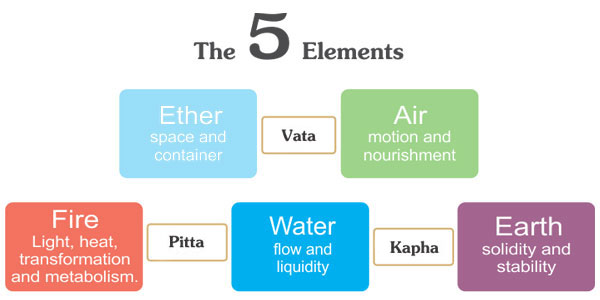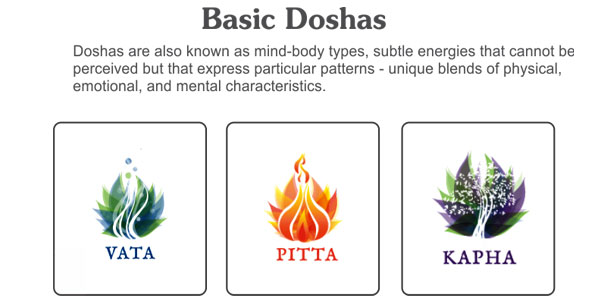Basic Principles of Ayurveda
The roots of the Ayurveda go deep into the Indian heritage, and are currently being recognized and studied as a part of medical science. The word Ayurveda is a Sanskrit term – which is the ancient religious language – meaning “the knowledge of life”. Although in these moderntimes it is mostly utilized for treatment purposes; the knowledge of Ayurveda extends to the whole of the universe. It has its own set ofprinciples and terminologies. The methods devised according to these principles are used for treatments and cures, and for overall health. The most commonly practiced methods include yoga and Ayurvedic diet.
Prakriti – Your Body Type
Ayurvedic living revolves around prakriti, your basic constitution – which according to Bhagavad Gita is the “primal motive force”. It is your basic constitution, and corresponds to your body type, described by three main doshas or forces: Vata, Pitta and Kapha, translated loosely as Air, Fire and Earth, respectively.
The Ideology of Ayurveda
Since it is an ancient art, many professionals and scholars disregard it as science, and claim the ideas lack logic and practicality. This is a misconception; just like every branch of science, first came the philosophies, then the science. Fortunately, experts today are now researching and increasingly accepting it as a science, and recognizing it’s effectiveness and widespread application.
Some of the main ideas:
- Energy is the ultimate resource– in Ayurveda it is believed that each and every phenomena in the world are caused by the energy around us. Also, every living and non-living being is made up of these energies. It further divides these into two categories; the tridosha and the triguna. The triguna govern all that happens in the universe; while the tridosha is the energies that make up a living being. There is a constant flow of energy from one to the other.
- Sight is not always right– another important idea is that just because you have seen something does not mean you have seen it right. Slightly confusing, but according to this, different individuals might view a particular thing as different; due to the difference in their prakriti.
- A treatment is not what cures the symptoms, but cures the illness– in the West, medical science specialists typically try to remedy the ailment by fighting its symptoms. In the view of Ayurveda, this is not the solution. Eliminating the symptoms only hides the problem, it does not solve it. Ayurvedic living eliminates the root of the problem; that is, why the problem occurred in the first place.
- We are what we eat– diet is of special significance and value in Ayurveda. In addition to gaining proper nutrition, the importance of the selection of food is also highlighted in this. For this, Ayurveda dictates the 6 tastes and qualities. Also, the tridosha are connected with digestion in one or more form, and food is concerned the major source of energy. This energy might be good, which maintains the balance; or it can be bad, that it can cause imbalance in the energies.
- Side-effects are a sign of ineffective treatment– Ayurvedic specialists believe that a treatment should not have no side-effects. If the remedy causes problems, then it cannot be regarded as healing.
- Every individual is unique– this means that every person is born with their own unique balance of the tridosha, which is called their prakriti. This balance is to be maintained for proper health. All the treatments of Ayurveda are focused on treating any imbalance in the prakriti.
- Balance is the solution to all problems– In addition to the balance of the tridoshas, it is also important that there is a balance between these and all the energies of the universe. A consistent flow of energy of throughout the universe is highly essential.
All the knowledge of Ayurveda is based on these ideas, and understanding these will help you apply it better, and live longer, happier, and healthier!


